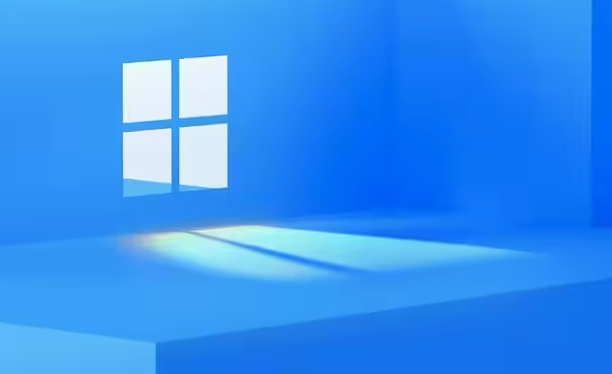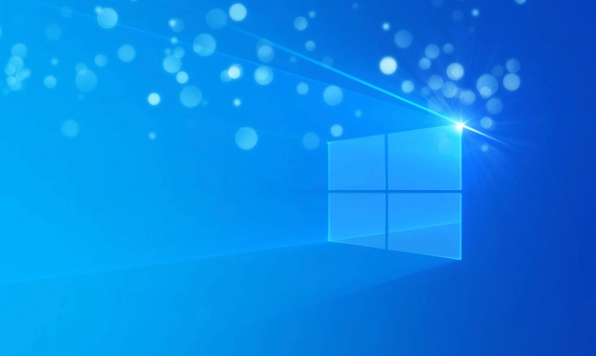To display hidden files and folders, you can achieve it in the following three ways: 1. Click the "View" tab in File Explorer and check "Hidden items" to temporarily display hidden content; 2. Set the global display of hidden files through the folder options, and the path is "View" → "Options" → "View" tab to select "Show hidden files, folders and drives" in the tab; 3. Advanced users can modify the Hidden item value to 1 through the registry to take effect permanently, and the registry must be backed up before the operation. The above method is suitable for different usage scenarios and can be selected according to your needs.

It is actually not difficult to display hidden files and folders. The key is to find the correct entrance to the system settings. Many people found that they could not find some files when searching for them. Later, they found out that they were hidden by the system by default. The following are several simple and effective methods to help you quickly view these "hidden" content.

Manually enable hidden files in File Explorer
This is the most common and direct way, suitable for most ordinary users.
Open any folder or Explorer window, click the View tab in the top menu bar, and then check " Hide Projects " in the toolbar. At this time, you will see the originally hidden files and folders, and will be hidden again after unchecking.

It should be noted that this method only takes effect on the current window, and it needs to be reset after closing the window and then opening it.
Open hidden files globally with folder options
If you want all windows to display hidden files by default, you can modify the system settings.
Open any folder, click " View " in the upper left corner → then click " Options " (some versions are right-clicking on the blank space to select "Details" in "View Method" and then enter the options) → In the pop-up window, switch to the " View " tab → Find the options under "Hidden Files and Folders", and select " Show hidden files, folders and drives " → Click OK to save settings.

After this setting, all folders will display hidden content by default and do not need to be manually turned on every time.
Modify hidden file display rules using the registry (Advanced)
If you have a certain understanding of the system, you can also control the display status of hidden files through the registry.
However, this method is more suitable for experienced users, and the steps are as follows:
- Press
Win Rto open the run window and enterregeditto enter; - Positioning path:
HKEY_CURRENT_USER\Software\Microsoft\Windows\CurrentVersion\Explorer\Advanced - Find the
Hiddenitem on the right and double-click it; - Modify the numerical data to:
-
1means to display hidden files; -
2means not to display;
-
- After the modification is completed, restart the Explorer or the computer will take effect.
??Note: It is recommended to back up related items before modifying the registry to avoid misoperation and causing system exceptions.
Tips: Which files are hidden by default?
Many important configuration files and system files in Windows are hidden by default, such as:
-
pagefile.sys(virtual memory file) -
hiberfil.sys(hibernate file) -
.sshfolder in the user directory (for remote login key)
These files are not usually recommended to be changed or deleted at will unless you know what you are doing.
Basically these are the methods, you can choose the most suitable method according to your usage habits. Although the operation is not complicated, it is sometimes easy to ignore the settings, and it is much more convenient to remember these entrances.
The above is the detailed content of How to show hidden files and folders in Windows?. For more information, please follow other related articles on the PHP Chinese website!

Hot AI Tools

Undress AI Tool
Undress images for free

Undresser.AI Undress
AI-powered app for creating realistic nude photos

AI Clothes Remover
Online AI tool for removing clothes from photos.

Clothoff.io
AI clothes remover

Video Face Swap
Swap faces in any video effortlessly with our completely free AI face swap tool!

Hot Article

Hot Tools

Notepad++7.3.1
Easy-to-use and free code editor

SublimeText3 Chinese version
Chinese version, very easy to use

Zend Studio 13.0.1
Powerful PHP integrated development environment

Dreamweaver CS6
Visual web development tools

SublimeText3 Mac version
God-level code editing software (SublimeText3)
 How to change the system display language for all users in Windows
Jul 31, 2025 am 08:18 AM
How to change the system display language for all users in Windows
Jul 31, 2025 am 08:18 AM
InstallthedesiredlanguagepackviaSettings→Time&Language→Language®ion,ensuring"SetasmyWindowsdisplaylanguage"isselected.2.Changethesystemdisplaylanguageinthesamemenuandrestart.3.OpenControlPanel→Region→Administrativetab,click"
 How to reset the Microsoft Store in Windows
Jul 31, 2025 am 08:23 AM
How to reset the Microsoft Store in Windows
Jul 31, 2025 am 08:23 AM
ResettheMicrosoftStoreviaSettingsbygoingtoApps>Installedapps,selectingMicrosoftStore,clickingAdvancedoptions,thenRepairandResetifneeded.2.Ifthatfails,re-registertheStoreusingPowerShellasadminwiththecommand:Get-AppXPackage-NameMicrosoft.WindowsStor
 How to reset the TCP/IP stack in Windows
Aug 02, 2025 pm 01:25 PM
How to reset the TCP/IP stack in Windows
Aug 02, 2025 pm 01:25 PM
ToresolvenetworkconnectivityissuesinWindows,resettheTCP/IPstackbyfirstopeningCommandPromptasAdministrator,thenrunningthecommandnetshintipreset,andfinallyrestartingyourcomputertoapplychanges;ifissuespersist,optionallyrunnetshwinsockresetandrebootagain
 How to install Windows on a Mac without Boot Camp
Jul 31, 2025 am 11:58 AM
How to install Windows on a Mac without Boot Camp
Jul 31, 2025 am 11:58 AM
Without BootCamp, installing Windows on Mac is feasible and works for different chips and needs. 1. First check compatibility: The M1/M2 chip Mac cannot use BootCamp, it is recommended to use virtualization tools; the Intel chip Mac can manually create a boot USB disk and install it in partition. 2. Recommended to use virtual machines (VMs) for M1 and above chip users: Windows ISO files, virtualization software (such as ParallelsDesktop or UTM), at least 64GB of free space, and reasonably allocate resources. 3. IntelMac users can manually install it by booting the USB drive: USB drive, WindowsISO, DiskU is required
 A guide to custom Windows installation options
Aug 01, 2025 am 04:48 AM
A guide to custom Windows installation options
Aug 01, 2025 am 04:48 AM
Choose"Custom:InstallWindowsonly(advanced)"forfullcontrol,asitallowsacleaninstallthatremovesoldissuesandoptimizesperformance.2.Duringsetup,managepartitionsbydeletingoldones(afterbackingupdata),creatingnewpartitions,formatting(usingNTFS),ors
 Step-by-step guide to installing Windows from an ISO file
Aug 01, 2025 am 01:10 AM
Step-by-step guide to installing Windows from an ISO file
Aug 01, 2025 am 01:10 AM
DownloadtheWindowsISOfromMicrosoft’sofficialsite.2.CreateabootableUSBusingMediaCreationToolorRufuswithaUSBdriveofatleast8GB.3.BootfromtheUSBbyaccessingthebootmenuoradjustingBIOS/UEFIsettings.4.InstallWindowsbyselectingcustominstallation,choosingtheco
 How to manage AppLocker policies in Windows
Aug 02, 2025 am 12:13 AM
How to manage AppLocker policies in Windows
Aug 02, 2025 am 12:13 AM
EnableAppLockerviaGroupPolicybyopeninggpedit.msc,navigatingtoApplicationControlPolicies,creatingdefaultrules,andconfiguringruletypes;2.Createcustomrulesusingpublisher,path,orhashconditions,preferringpublisherrulesforsecurityandflexibility;3.Testrules
 How to install Windows on a Mac
Jul 31, 2025 am 10:07 AM
How to install Windows on a Mac
Jul 31, 2025 am 10:07 AM
ForIntel-basedMacs,useBootCampAssistanttocreateadual-bootsystemwithWindowsbypreparingaUSBdrive,downloadingaWindowsISO,partitioningthedisk,andinstallingWindowsalongsidemacOSwithsupportdrivers.2.ForAppleSiliconMacs(M1/M2/M3),usevirtualizationsoftwareli






